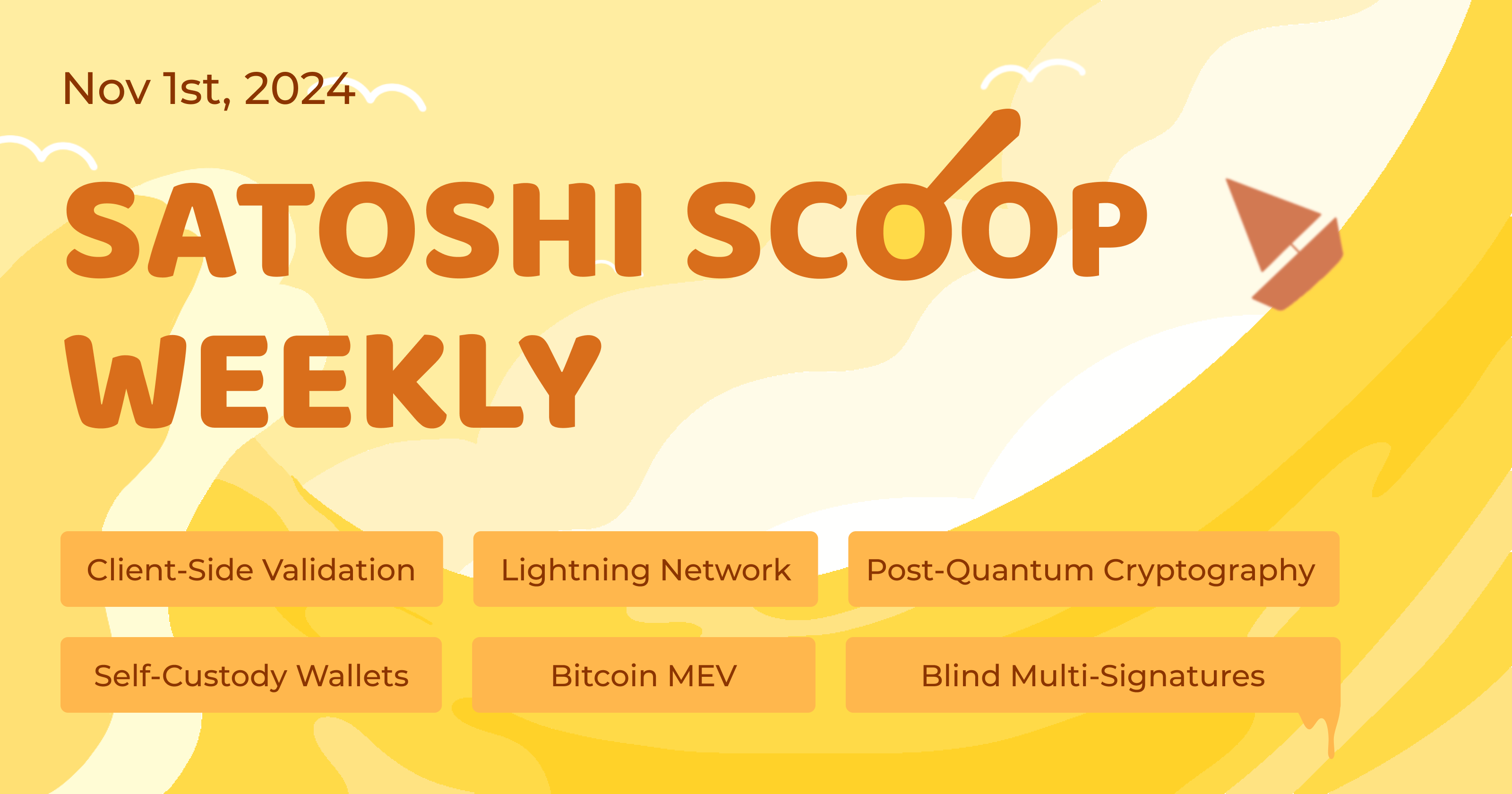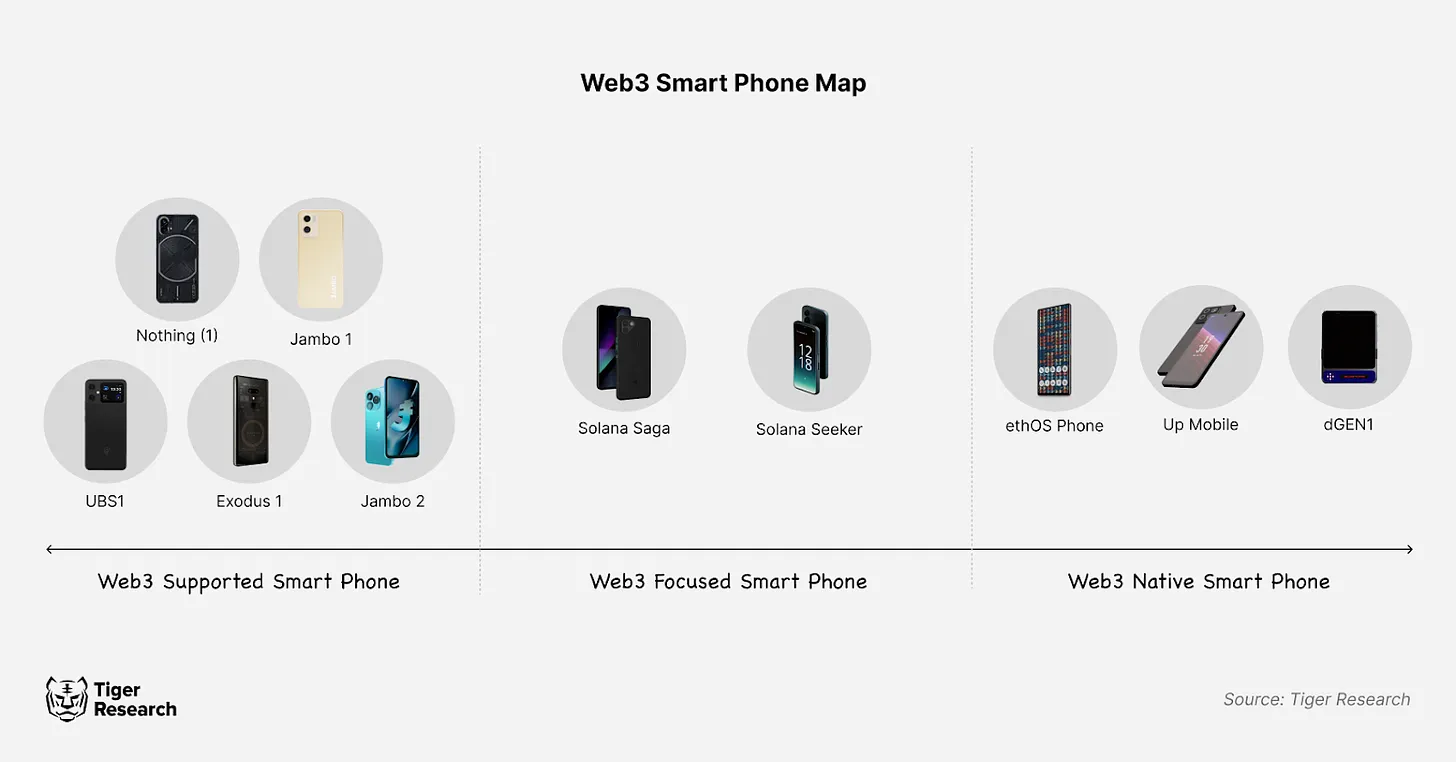Satoshi Scoop Weekly, 1 Nov 2024
 Cryptape
CryptapeTable of contents
- Crypto Insights
- How Shielded CSV Protocol Enhances Privacy and Transaction Throughput Without Forks
- A Valuable Metric for Evaluating the Lightning Network
- Spark: An Instant, Low-Cost, Self-Custodial Open Source Solution for Bitcoin Payments
- Hybrid L2: Making Bitcoin the Center of DeFi
- Another Block Solved by a Solo Miner
- Tech Powered Freedom: Bitcoin, eCash, and Nostr
- Top Reads on Blockchain and Beyond
- A Hash-Based Signature Scheme Designed Against Quantum Threats to Bitcoin
- MEV Emerging on Bitcoin: Analyzing Conditions for MEV Emergence on Ethereum and Similar Trends on Bitcoin
- Enabling Self-Custody for the Masses Through Smartphone Bitcoin Wallets
- Will Web3 Smartphones Drive Mass Adoption of Blockchain? Movements from Blockchain Networks and Traditional Manufacturers
- Blind Multisignatures for Anonymous Tokens with Decentralized Issuance

Crypto Insights
How Shielded CSV Protocol Enhances Privacy and Transaction Throughput Without Forks
Blockstream, Alpen Labs, and ZeroSync jointly released a paper on the Shielded CSV protocol back in September. This protocol enhances client-side validation (CSV) to enable private transactions and could increase transaction capacity from 11 per second to over 100 when combined with additional measures.
This article provides a high-level overview of the Shielded CSV protocol, detailing its background and how it can improve privacy and transaction throughput without requiring any hard or soft forks.
A Valuable Metric for Evaluating the Lightning Network
Traditional metrics like node count, channel count, and capacity have been used to assess the Lightning Network, but they only tell part of the story. To truly understand the performance of this second-layer solution, we need to focus on flow—specifically, Max Flow, a metric with a long history of optimizing complex systems.
Spark: An Instant, Low-Cost, Self-Custodial Open Source Solution for Bitcoin Payments
Spark is an open-source Bitcoin Layer 2 solution that facilitates instant, low-cost self-custodial transactions for Bitcoin and tokens, while supporting Lightning Network transactions. It aims to extend the Lightning Network rather than replace it, addressing its limitations. Spark users don't need to run a node, manage Lightning channels, or lock up liquidity themselves.
Currently in alpha testing, Spark has unlocked functionalities once thought impossible on Bitcoin, including Bitcoin-native stablecoins, self-custody exchanges, and Bitcoin miner payouts.
For more project information, visit: spark.info.
Hybrid L2: Making Bitcoin the Center of DeFi
As the name suggests, Hybrid L2 is an innovative attempt to combine Bitcoin's security with Ethereum DeFi. The project anchors Ethereum L2s and cross-chain bridges onto Bitcoin, positioning Bitcoin as the foundation and safeguard for DeFi platforms while unlocking the flow of BTC into the Ethereum ecosystem.
For more project information, visit: gobob.xyz.
Another Block Solved by a Solo Miner
The anonymous Bitcoin mining service ckpooldev recently announced that a miner discovered block 867188 at a rate of approximately 150 PH/s, earning a reward of 3.329 BTC.
Tech Powered Freedom: Bitcoin, eCash, and Nostr
Alex Gladstein, Chief Strategy Officer of the Human Rights Foundation and a prominent advocate for Bitcoin's role in promoting freedom, discusses their work empowering activists under authoritarian regimes, the structural issues facing human rights funding, and how technologies like Bitcoin can change the fight for freedom. He also explores the impacts of p2p networks like Nostr, the evolution of eCash, and the digital arms race between authoritarian governments and freedom-promoting technologies.
Top Reads on Blockchain and Beyond
A Hash-Based Signature Scheme Designed Against Quantum Threats to Bitcoin
This article assumes that Bitcoin will inevitably face quantum threats and first illustrates what that might look like, followed by an analysis of several existing hash-based signature schemes and their trade-offs. The author proposes a quantum-resistant upgrade for Bitcoin clients named DASK (Digests as Secret Keys), which uses hash-based encryption as a fallback option, ensuring Bitcoin users are protected from quantum attacks without any near-term consensus changes.
This solution encourages a client-side specification change, modifying how Bitcoin wallets derive their elliptical curve secret keys. A consensus change would later be needed to retroactively alter spending rules, requiring users to migrate their coins to a DASK-supported wallet before that fork. Importantly, on-chain output scripts to which coins are paid remain unchanged, so DASK won't affect Bitcoin's fungibility, scalability, or consensus rules in the way a brand new output script format would.
MEV Emerging on Bitcoin: Analyzing Conditions for MEV Emergence on Ethereum and Similar Trends on Bitcoin
A report from Rebar Labs examines the conditions that led to the emergence of MEV (Maximal Extractable Value) on Ethereum and maps these conditions onto the Bitcoin ecosystem, exploring the current states of Bitcoin-based tokens, DeFi, metaprotocols, and other projects. The author expects a rapid increase in Bitcoin MEV in the coming year. Searchers from Ethereum and elsewhere are likely to explore these new opportunities, particularly given the much lower competition on Bitcoin. Miners will benefit from fee competition arising from MEV strategies.
Enabling Self-Custody for the Masses Through Smartphone Bitcoin Wallets
Bitkey, launched by Block, recently released a white paper on smartphone-based Bitcoin wallet design, to make self-custody safe and accessible to the mass market.
Bitkey employs various cryptographic techniques to address security, usability, and privacy challenges inherent to mobile platforms, including FROST-based multi-party computation, secure key backups, Oblivious Pseudorandom Functions for PINs, and zero-knowledge proofs, along with protective procedures like server signing policies and time-delayed security mechanisms.
Full paper: Unlocking Mass-Market Self-Custody: Secure and Private Smartphone Bitcoin Wallets
Will Web3 Smartphones Drive Mass Adoption of Blockchain? Movements from Blockchain Networks and Traditional Manufacturers
This article categorizes Web3-enabled smartphones into three types: 1) Web3 supported, 2) Web3 focused, and 3) Web3 native.

They offer two major advantages:
As portable devices, they significantly improve accessibility to Web3 services.
As decentralized solutions, they address the high fees charged by centralized app stores (e.g., Google Play and Apple App Store charging up to 30%).
However, they also face two major challenges:
Hardware specifications lag behind mainstream smartphones.
Public interest is more focused on rewards like airdrops, rather than technical innovations.
Blind Multisignatures for Anonymous Tokens with Decentralized Issuance
This paper proposes the first constructions of anonymous tokens with decentralized issuance. It considers a dynamic set of signers/issuers; a user can obtain a token from any subset of the signers, which are publicly verifiable and unlinkable to the issuance process. To realize this new primitive, the research formalizes the notion of Blind Multi-Signatures (BMS), allowing a user to interact with multiple signers to obtain a (compact) signatures that cannot be linked to any individual interaction, even if all signers collude.
The paper also introduces two BMS constructions—one based on BLS signatures and the other based on discrete logarithms without pairings—proving their security in the Algebraic Group Model. Additionally, it provides a proof-of-concept implementation that demonstrates support for low-cost verification, the most critical operation in blockchain applications.
Subscribe to my newsletter
Read articles from Cryptape directly inside your inbox. Subscribe to the newsletter, and don't miss out.
Written by
